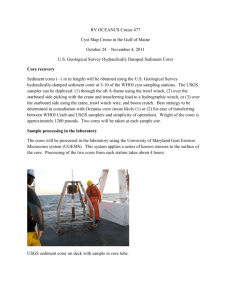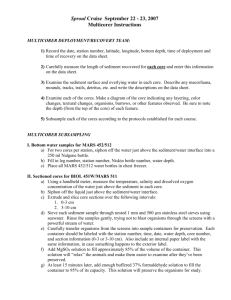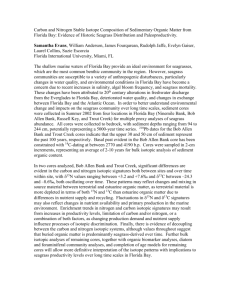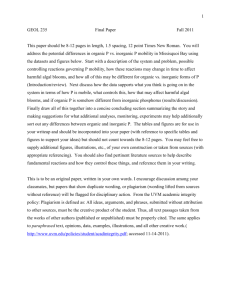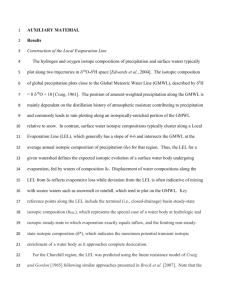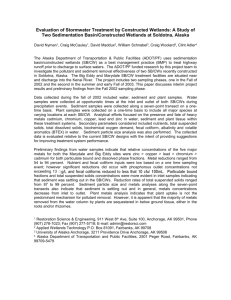Material properties and microstructure from
advertisement
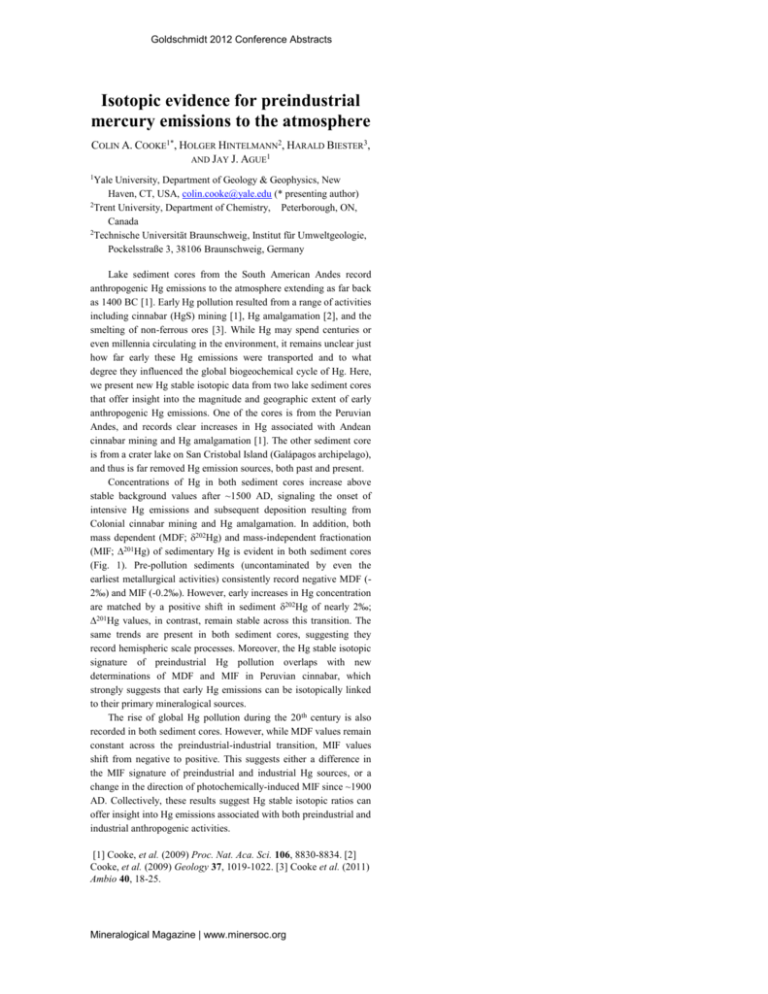
Goldschmidt 2012 Conference Abstracts Isotopic evidence for preindustrial mercury emissions to the atmosphere COLIN A. COOKE1*, HOLGER HINTELMANN2, HARALD BIESTER3, AND JAY J. AGUE1 1Yale University, Department of Geology & Geophysics, New Haven, CT, USA, colin.cooke@yale.edu (* presenting author) 2Trent University, Department of Chemistry, Peterborough, ON, Canada 2Technische Universität Braunschweig, Institut für Umweltgeologie, Pockelsstraße 3, 38106 Braunschweig, Germany Lake sediment cores from the South American Andes record anthropogenic Hg emissions to the atmosphere extending as far back as 1400 BC [1]. Early Hg pollution resulted from a range of activities including cinnabar (HgS) mining [1], Hg amalgamation [2], and the smelting of non-ferrous ores [3]. While Hg may spend centuries or even millennia circulating in the environment, it remains unclear just how far early these Hg emissions were transported and to what degree they influenced the global biogeochemical cycle of Hg. Here, we present new Hg stable isotopic data from two lake sediment cores that offer insight into the magnitude and geographic extent of early anthropogenic Hg emissions. One of the cores is from the Peruvian Andes, and records clear increases in Hg associated with Andean cinnabar mining and Hg amalgamation [1]. The other sediment core is from a crater lake on San Cristobal Island (Galápagos archipelago), and thus is far removed Hg emission sources, both past and present. Concentrations of Hg in both sediment cores increase above stable background values after ~1500 AD, signaling the onset of intensive Hg emissions and subsequent deposition resulting from Colonial cinnabar mining and Hg amalgamation. In addition, both mass dependent (MDF; 202Hg) and mass-independent fractionation (MIF; 201Hg) of sedimentary Hg is evident in both sediment cores (Fig. 1). Pre-pollution sediments (uncontaminated by even the earliest metallurgical activities) consistently record negative MDF (2‰) and MIF (-0.2‰). However, early increases in Hg concentration are matched by a positive shift in sediment 202Hg of nearly 2‰; 201Hg values, in contrast, remain stable across this transition. The same trends are present in both sediment cores, suggesting they record hemispheric scale processes. Moreover, the Hg stable isotopic signature of preindustrial Hg pollution overlaps with new determinations of MDF and MIF in Peruvian cinnabar, which strongly suggests that early Hg emissions can be isotopically linked to their primary mineralogical sources. The rise of global Hg pollution during the 20 th century is also recorded in both sediment cores. However, while MDF values remain constant across the preindustrial-industrial transition, MIF values shift from negative to positive. This suggests either a difference in the MIF signature of preindustrial and industrial Hg sources, or a change in the direction of photochemically-induced MIF since ~1900 AD. Collectively, these results suggest Hg stable isotopic ratios can offer insight into Hg emissions associated with both preindustrial and industrial anthropogenic activities. [1] Cooke, et al. (2009) Proc. Nat. Aca. Sci. 106, 8830-8834. [2] Cooke, et al. (2009) Geology 37, 1019-1022. [3] Cooke et al. (2011) Ambio 40, 18-25. Mineralogical Magazine | www.minersoc.org


